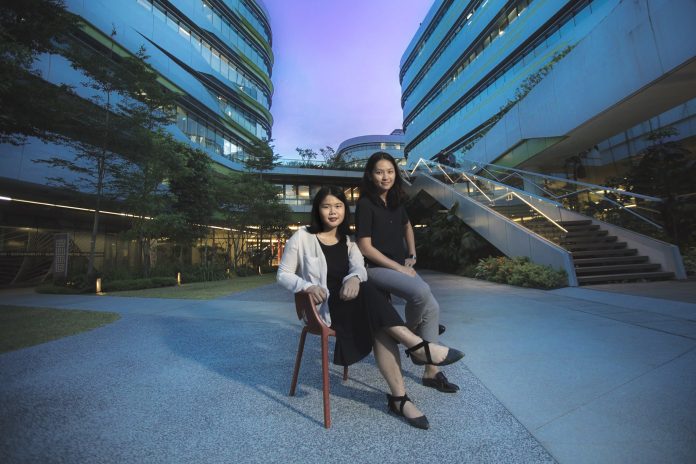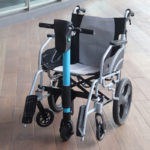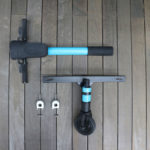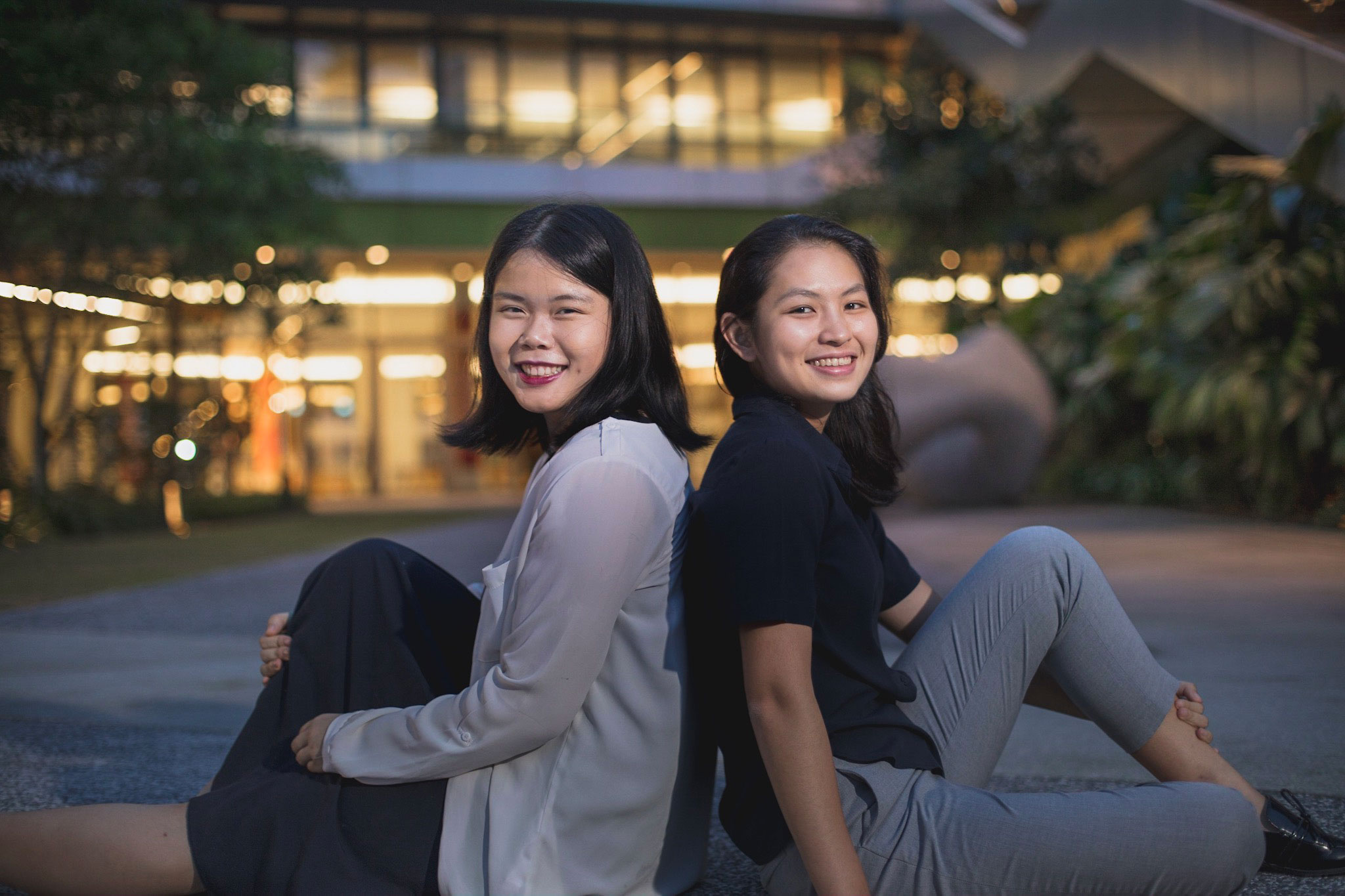Alumni are a critical part of any university. From career opportunities to mentorship and being role models, alumni help shape the university culture in many ways. SUTD is no different. With the school leading the charge in providing opportunities for women to make their mark in technology, we caught up with three high flying alumnae for a wide-ranging conversation about what they’ve been up to since graduating, and to look back at their SUTD experience.
Turning a class project into a startup that enhances the mobility of the wheelchair-bound
Since graduating, Kimberlyn Nicole Tjipto (Engineering Product Development, 2017) hasn’t strayed far from her SUTD roots. Along with two group mates, Kimberlyn used their project on rehabilitative technologies as the basis to found their hardware startup, Movinc. Their product, EMMA, is an attachment that motorises manual wheelchairs while being portable enough to fit in a car boot. They won the grand prize of $50,000 at Create4Good in 2017, a competition for startups that create social good.
“One of our group mates was volunteering at the Handicaps Welfare Association and noticed that not everyone there had motorised wheelchairs. Some of these beneficiaries felt that while useful, motorised wheelchairs were prohibitively expensive and many of them were not portable,” said Kimberlyn, when asked about how the idea came about.
“That’s the thing about SUTD; we focus a lot on applying what we learn to solve real problems. As we spoke to the potential users, we became very passionate and felt that it is something meaningful to work on,” she adds.
Solving meaningful problems for the real world
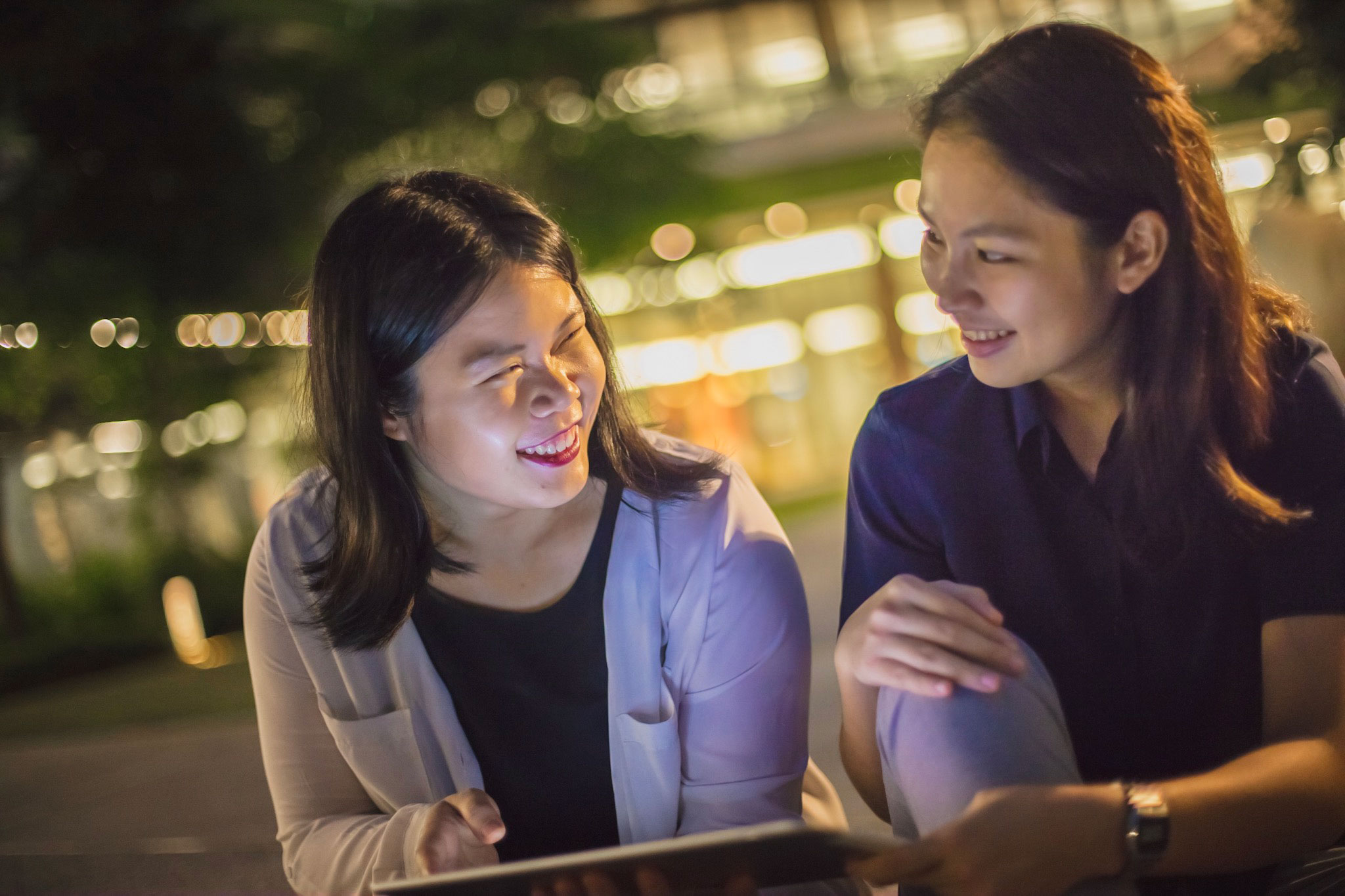
As for Jezamine Chua (Architecture and Sustainable Design, 2016, Masters of Architecture, 2017), she is now an architectural designer at the local firm S A Chua Architects where she is working on the master plan for the public spaces of Jalan Besar, where she grew up as a child.

“When it comes to public spaces, you need to make design considerations for people from all walks of life to address their needs and pre-empt potential issues that may arise. I have so many good memories of Jalan Besar, so I hope to bring that to both current residents, and future generations” Jezamine explains.
“I learned so much at SUTD that helped from a design thinking standpoint, which I am bringing to this project.”
Learning from the best in the world
While they are currently focused on solving issues locally, both Kimberlyn and Jezamine feel that global exposure is something SUTD is excellent at providing their students with. Jezamine, for example, went on a study trip to Amsterdam for her master’s thesis. “Amsterdam is known for their ‘Blue City’ model where they achieved zero nett energy from the all its sectors. The integration between work and life is something that I apply to my current work. But this global exposure is not just for postgraduates. For example, during my freshmore year, we tackled the lack of access to clean water in developing countries, something that most Singaporeans have never experienced.”
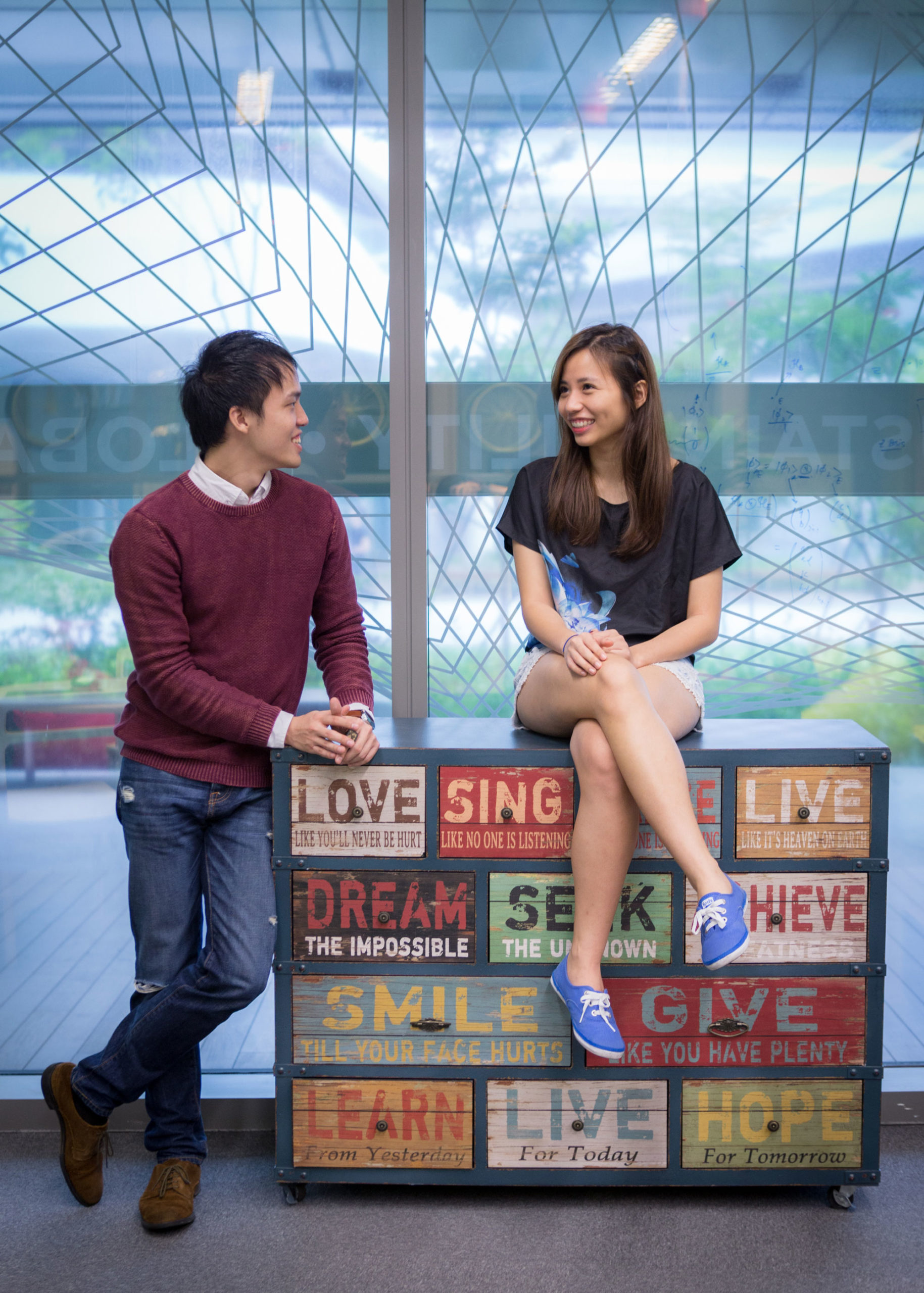
And perhaps the best example of this global approach is the story of Ring Theory, a startup co-founded by Olivia Seow (Engineering Product Development, 2015). One of their early ideas got implemented in America by the Massachusetts Bay Transportation Authority (MBTA) to wirelessly pay for metro rides in Boston by tapping the ring they created. The project was funded on Kickstarter and got media attention from the likes of Mashable and Time magazine.
When asked about their success, Olivia was quick to credit SUTD’s involvement. “Lots of people helped us out with so many things. From Senior Lecturer Teo Tee Hui who stayed with us till late in the night for product testing, to the enthusiasm from our classmates. We eventually got our first big order when the SUTD administration ordered 300 units for one of the matriculating classes. Even when it came to working with the MBTA and MIT for the rollout, the school also showed us a lot of support. So we are very thankful.”
These days, Olivia and her team at Ring Theory get consulted for their expertise in the IoT payments space by other companies while they work on their next product.
What makes SUTD unique
We asked each of the three women about how their SUTD experience has helped them in their careers so far, and unsurprisingly all three pointed that being at the intersection of both design and technology has given them an edge.
Jezamine shares that “What we learn in SUTD prepares us well for the future. While the architecture industry still focuses on traditional skills such as draftsmanship, our familiarity with newer technology gives us an advantage. For example, we can write a program to figure out the structure of a building or use robots to make the construction environment a lot safer for the workers.”
Being able to prototype ideas quickly also taught them to be very agile. “We took a hands-on approach and tested lots of ideas to see what worked. Things like that make the SUTD environment very innovative as we can move very quickly before deciding on the way forward,” says Olivia.
Kimberlyn laughs as she recalls one of the tougher Engineering Product Development modules in SUTD where she and her team spent many late nights in the fab lab working on various prototypes. “At the end of the day, you learn so much about solving unforeseen problems that, going into the real world, you get the confidence to take on whatever comes your way.”
Gender stereotypes and learning in an inclusive environment

When asked about gender stereotypes as a female in an engineering school, Olivia felt that it never really came across at SUTD, as the school itself is very inclusive. “When I speak with people, and they find out that I’m an engineer, they are normally enthusiastic and interested in what I do. I guess that some people still think of engineers as people in a yellow hard hat carrying a blueprint, so maybe it’s more of a profession thing than gender.”
In Kimberlyn’s view, “People don’t really associate girls with engineering, but it doesn’t come from a bad place. When I tell them what I do, they always go away with a pleasant surprise.”
Advice for aspiring STEM majors
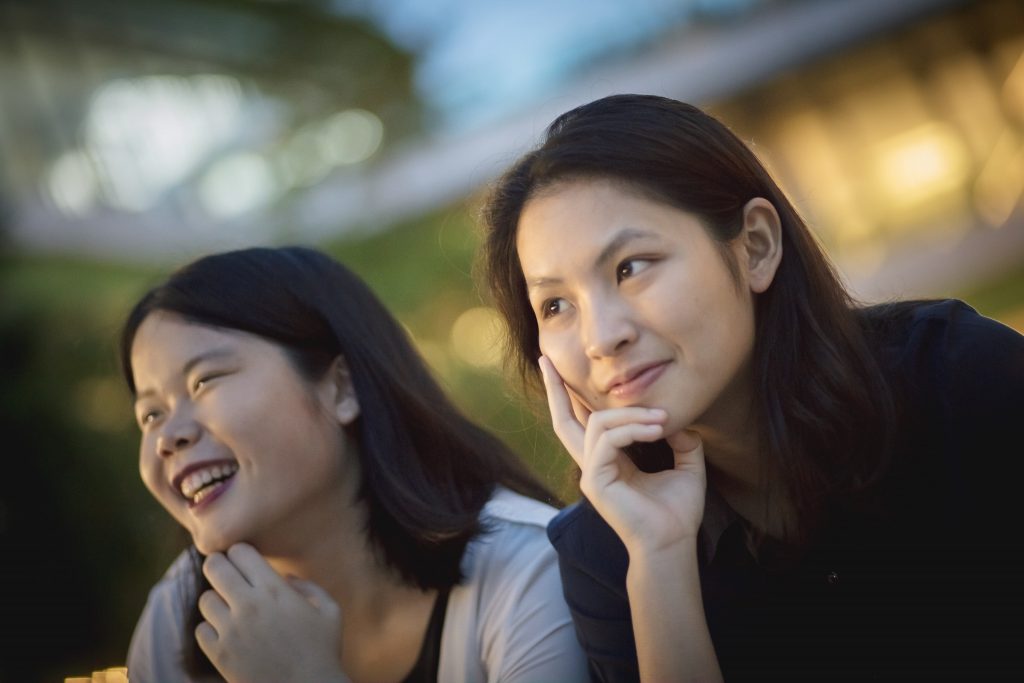 When asked for advice they would give to girls aspiring to come to SUTD, all three feel that SUTD gives you a good opportunity to try out various technology and design related subjects before committing to a path.
When asked for advice they would give to girls aspiring to come to SUTD, all three feel that SUTD gives you a good opportunity to try out various technology and design related subjects before committing to a path.
“Come and try out different things and see what you like, SUTD has a great culture where it’s more cooperative than competitive and so you are encouraged to explore your passions. For me, I am not a natural leader but my time in SUTD challenged me to lead initiatives in areas that I love. I ended up setting up SUTDio, which is the club representing the ASD students,” Jezamine says, fondly recalling her time in the university.
Our multi-disciplinary, design-centric education shapes you into a modern tech leader.
Be empowered to build a better career and a better world! Apply now. #ChooseSUTD
Like what you just read?
Applications for our undergraduate programmes are now open. For more details, click here.
Missed out on our Admissions and Career Talk? Rewatch the sessions here.
It can be hard to ask the right questions that will help you to decide which university to join, so we’ve compiled a list of FAQs for you here.




















